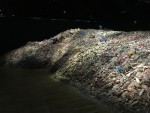 The Kimball Art Museum portrays a side of the meat business not seen by many visitors to Forth Worth, Texas. If you only toured the Stockyards outside the Museum, you’d miss the preceding centuries of carnivorous history.
In the late 1580s, Annibale Carracci, painted two canvases that give us an idea of how meat fit into urban landscapes during Italy’s colorful Renaissance. By the late 16th century, Renaissance art entered the period of Mannerist painting leading to the Baroque period, when Read more [...]
The Kimball Art Museum portrays a side of the meat business not seen by many visitors to Forth Worth, Texas. If you only toured the Stockyards outside the Museum, you’d miss the preceding centuries of carnivorous history.
In the late 1580s, Annibale Carracci, painted two canvases that give us an idea of how meat fit into urban landscapes during Italy’s colorful Renaissance. By the late 16th century, Renaissance art entered the period of Mannerist painting leading to the Baroque period, when Read more [...] Meat, Indoors and Outdoors in Forth Worth
Reply
 The Kimball Art Museum portrays a side of the meat business not seen by many visitors to Forth Worth, Texas. If you only toured the Stockyards outside the Museum, you’d miss the preceding centuries of carnivorous history.
In the late 1580s, Annibale Carracci, painted two canvases that give us an idea of how meat fit into urban landscapes during Italy’s colorful Renaissance. By the late 16th century, Renaissance art entered the period of Mannerist painting leading to the Baroque period, when Read more [...]
The Kimball Art Museum portrays a side of the meat business not seen by many visitors to Forth Worth, Texas. If you only toured the Stockyards outside the Museum, you’d miss the preceding centuries of carnivorous history.
In the late 1580s, Annibale Carracci, painted two canvases that give us an idea of how meat fit into urban landscapes during Italy’s colorful Renaissance. By the late 16th century, Renaissance art entered the period of Mannerist painting leading to the Baroque period, when Read more [...]  If you want a new experience while visiting an art museum, try going as a food logistics nerd. Watch the docents and visitor services personnel freeze for a moment as they try to comprehend your request for guidance on finding all the art in the museum that represents different aspects of the food supply chain and food logistics.
Recently, I had this pleasure at Boston’s Museum of Fine Arts, the home of such luminaries as John Singleton Copley and John Singer Sargent. The two ladies at the front
If you want a new experience while visiting an art museum, try going as a food logistics nerd. Watch the docents and visitor services personnel freeze for a moment as they try to comprehend your request for guidance on finding all the art in the museum that represents different aspects of the food supply chain and food logistics.
Recently, I had this pleasure at Boston’s Museum of Fine Arts, the home of such luminaries as John Singleton Copley and John Singer Sargent. The two ladies at the front  Not a day goes by when we aren't told how Big Food conspires to make us fat while exploiting our environment. Is this really the end of our debate about the state of our food system? Tyler Cowen's book, An Economist Gets Lunch (2012), offers an alternative view, one that might spread the blame rather than give us all a pass. He suggests that regulation, television, war, and changing demographics in the 20th century shaped a food system that looks industrial and often tasteless --- and in some cases
Not a day goes by when we aren't told how Big Food conspires to make us fat while exploiting our environment. Is this really the end of our debate about the state of our food system? Tyler Cowen's book, An Economist Gets Lunch (2012), offers an alternative view, one that might spread the blame rather than give us all a pass. He suggests that regulation, television, war, and changing demographics in the 20th century shaped a food system that looks industrial and often tasteless --- and in some cases  Logi, a mythological Nordic warrior, won an medieval eating contest that involved consuming a tray of meat, bones, and the tray itself. (The tray was made of bread in those days, so not such a big deal as it appears.) His gluttonous display was typical of how men proved they were, indeed, men. The more food consumed, the more powerful the man.
For centuries now, eating enormous quantities of food has been necessary to maintain one’s social status among the elite as much as it was
Logi, a mythological Nordic warrior, won an medieval eating contest that involved consuming a tray of meat, bones, and the tray itself. (The tray was made of bread in those days, so not such a big deal as it appears.) His gluttonous display was typical of how men proved they were, indeed, men. The more food consumed, the more powerful the man.
For centuries now, eating enormous quantities of food has been necessary to maintain one’s social status among the elite as much as it was